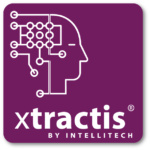Highly Intelligible
XTRACTIS-induced models are intelligible: humans can fully understand the internal decision-making logic of the AI systems automating the decisions.
This chart shows the “#1 ranking” counts for INTELLIGIBILITY observed from 21 Public Use Cases with benchmarks.
No Data Found
Highly Predictive
XTRACTIS-induced models are robust: their performance is at least as high as mainstream AI and data-driven modeling techs, as benchmarks prove.
This chart shows the “#1 ranking” counts for PERFORMANCE observed from 21 Public Use Cases with benchmarks.
No Data Found
XTRACTIS vs. its 4 Challengers Benchmarks Results


The benchmarks of XTRACTIS, Logistic Regression, Random Forest, Boosted Tree, and Neural Network are carried out on Test and External Test datasets (all the unknown cases of the reference dataset, i.e., not used for training or validation).
In these graphs, the Intelligibility Score IS and the Performance Score PS are calculated from the 21 public Use Cases (UC) that include benchmarks of models. As Logistic Regression is inapplicable to Regression (UC#02, UC#15 and UC#23) and unavailable for UC#01, the graph#1 displays the scores calculated for the 21 UCs, but only for 4 modeling techniques. Graph#2 displays the scores of the 5 modeling techniques, calculated only for the 17 UCs for which Logistic Regression is available.
The center of a bubble corresponds to the point of coordinates IS -on top- and PS -on bottom. A bubble on the top-right corner is the Holy Grail for critical AI-based decision systems: an AI Technique which produces predictive models with the highest Performance and the highest Intelligibility.
Public Use Cases on Real World Data
Our Use Cases present the results of XTRACTIS modeling and include complete Benchmarks against Neural Network, Boosted Tree, Random Forest, and Logistic Regression.
These studies illustrate the ability of XTRACTIS to automatically induce knowledge in the form of predictive and intelligible mathematical relationships from real-world data (public data or authorized private data).
For each application, we show how the induced décision system uses its fuzzy rules to compute explained predictions for new situations, i.e. unknown to the learning data set.
Choose the sector to access the corresponding Use Cases.
XTRACTIS discovers how to identify foetus heart conditions based on signal characteristics of fetal heart rate and the mother’s uterine contractions. As a result, you get an explainable and accurate automated medical diagnosis.
UC#03 - Release: Sep. 2022 | Update: Mar. 2024
XTRACTIS discovers how to detect breast cancer based on topological characteristics of mammary cells. As a result, you get an explainable and accurate automated medical diagnosis.
UC#04 - Release: Sep. 2022 | Update: Mar. 2024
XTRACTIS discovers how to detect ovarian cancer based on the 15,154 mass-charge ratios coming from the protein spectrum of serum samples, and for a small number of patients. As a result, you get an explainable and accurate automated medical diagnosis.
UC#05 - Release: Sep. 2022 | Uodate: Mar. 2024
XTRACTIS discovers how to detect prostate cancer based on the expression levels of 12,600 genes and for a small number of patients. As a result, you get an explainable and accurate automated medical diagnosis.
UC#08 - Release: Oct. 2022 | Update: Mar. 2024
XTRACTIS discovers how to identify 2 types of lung cancer based on the expression levels of 12,533 genes and for a small number of patients. As a result, you get an explainable and accurate automated medical diagnosis.
UC#12 - Release: Jan. 2023 | Update: Mar. 2024
XTRACTIS discovers how to detect kidney disease based on the patient record and blood measures. As a result, you get an explainable and accurate automated medical diagnosis.
UC#14 - Release: Feb. 2023 | Update: Mar. 2024
XTRACTIS discovers how to detect Parkinson’s disease based on simple voice recordings of patients. As a result, you get an explainable and accurate automated medical diagnosis.
UC#17 - Release: May 2023 | Update: Mar. 2024
XTRACTIS discovers the strategies to evaluate customer attrition and to assign a churning score to a customer in a rational way in order to adapt anti-churning strategies.
UC#22 - Release: Feb. 2024
XTRACTIS discovers the strategy behind credit card scams based on a few characteristics of each transaction, to instantly detect the fraudulent ones and to eventually adapt protection measures.
UC#20 - Release: Nov. 2023 | Update: Feb. 2024
UC#19 - Release: Sep. 2023
UC#21 - Release: Oct. 2023 | Update: Feb. 2024
UC#18 - Release: Jun. 2023 | Update: Jan. 2024
UC#15 - Release: Mar. 2023 | Update: Mar. 2024
Design an AI-based decision system that accurately predicts the upcoming risk of underwater pipes rupture considering the apparent complexity of the phenomenon, to plan rational maintenance operations.
UC#13 - Release: Feb. 2023 | Update: Feb. 2024
UC#02 - Release: Aug. 2022 | Update: Mar. 2024
Discovery of effective emergency braking strategies from different driving situations to design an EBA that assists the driver by triggering automatically the ABS, while being able to explain each decision offline.
UC#01 - Release: Nov. 2021 | Update: Mar. 2024
UC#23 - Released: Feb. 2024
UC#16 - Released: Mar. 2023 | Updated: Feb. 2024
UC#11 - Released: Jan. 2023 | Updated: Feb. 2024
Design an AI-based decision system that accurately and instantly identifies a type of invading Unmanned Aerial Vehicle (UAV) in a civilian environment, based on Wi-Fi traffic data records, to take appropriate action based on a rational decision.
UC#10 - Released: Jan. 2023 | Updated: Feb. 2024
Design an AI-based decision system that accurately detects an intrusion on a computer network and instantly identifies the type of attack from features of the connection logs, to execute the appropriate action based on a rational decision.
UC#09 - Released: Oct. 2022 | Updated: Feb. 2024
Design an AI-based decision system that accurately and instantly detects underwater mines from sonar echoes to equip vessels, submarines, and drones with a detector making rational and explainable and automated decisions.
UC#07- Released: Oct. 2022 | Updated: Feb. 2024
Design an AI-based decision system that accurately and instantly diagnoses an intrusion on a computer network from features of the connection logs, to execute the appropriate action based on a rational decision.

















































